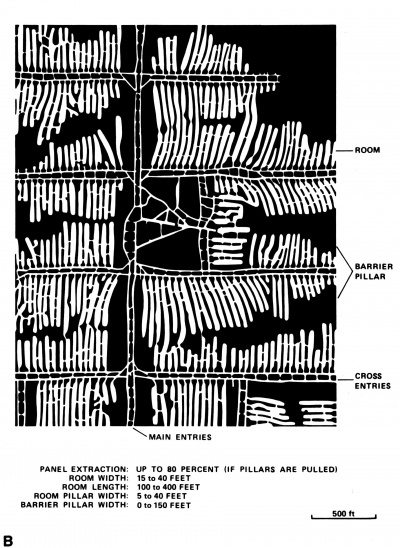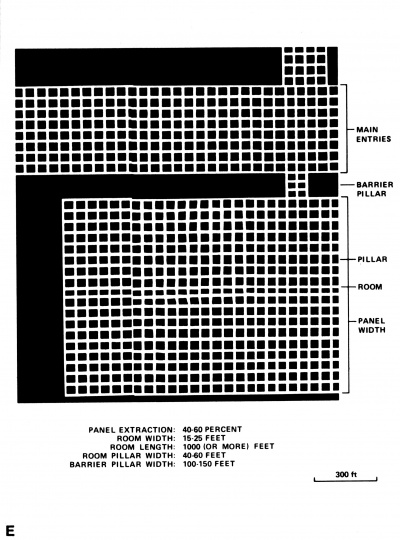Mining Method
The methods are (1) room and pillar and (2) high extraction. The method used gives some indication of the amount and pattern of coal extraction within each mined area, and has some influence on the timing and type of subsidence that can occur over a mine. The following discussion and illustrations of mining methods are based on Guither et al. (1984)[1].
Room and pillar
In room-and-pillar mines, coal is removed from haulage-ways (entries) and selected areas called rooms. Pillars of unmined coal are left between the rooms to support the roof. Depending on the size of rooms and pillars, the amount of coal removed from the production areas will range from 40% to 70%.
Room and Pillar - mining is divided into six categories:
- room-and-pillar basic (RPB)
- modified room and pillar (MRP)
- room-and-pillar panel (RPP)
- blind room and pillar (BRP)
- checkerboard room and pillar (CRP)
- room and pillar (RP), a classification used when the specific type of room-and-pillar mining is unknown.
Room and pillar basic (RPB)
An early method that did not follow a preset mining plan and therefore resulted in very irregular designs
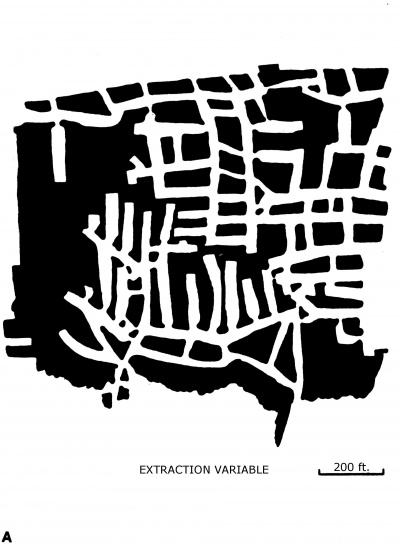
Modified room and pillar (MRP)
Room and pillar panel (RPP)
Blind room and pillar (BRP)
Blind and checkerboard are the most common types of room-and-pillar mining used in Illinois today. The knowledge of room-and-pillar mining methods gives a trained engineer information on the nature of subsidence that may occur. A more extensive discussion of subsidence can be found in Bauer et al. (1993)[2].
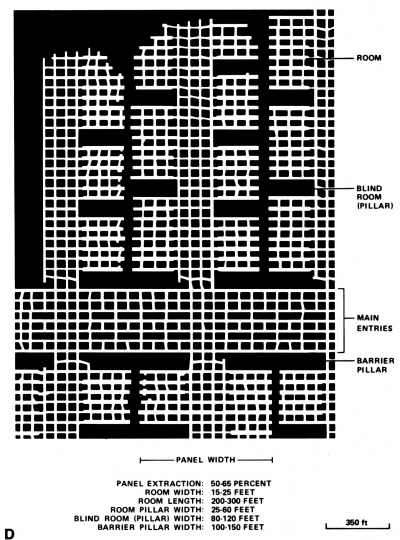
Checkerboard room and pillar (CRP)
High-Extraction
These mining methods are subdivided into high-extraction retreat and longwall. In these methods, much of the coal is removed within well defined areas of the mine. Subsidence of the surface above these areas occurs within weeks. Once the subsidence activity ceases, the potential for further movement over these areas is low; however, subsidence may continue for several years after mining.
High-extraction retreat (HER)
High-extraction retreat mining is a form of room-and-pillar mining that extracts most of the coal. Rooms and pillars are developed in the panels, and the pillars are then systematically removed.
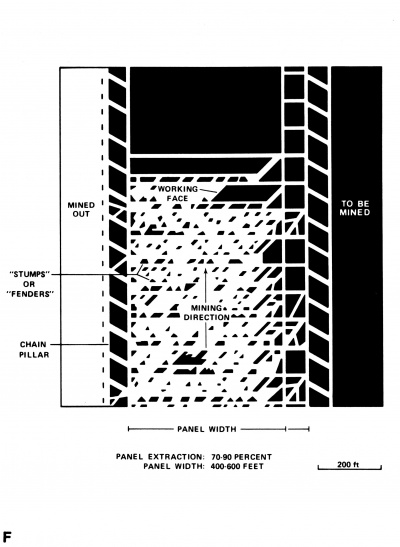
Longwall
Pre-mechanical Longwall (Pre-1960)
In early (pre-1960) longwall mines, mining advanced in multiple directions from a central shaft. Large pillars of coal were left around the shaft, but all coal was removed beyond these pillars. Miners placed rock and wooden props and cribs in the mined-out areas to support the mine roof. The overlying rock gradually settled onto these supports, thus producing subsidence at the surface.
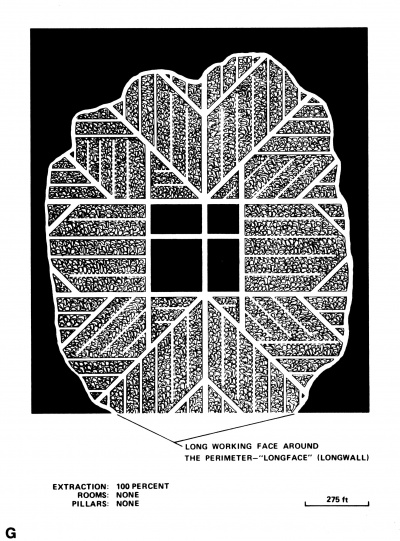
Mechanical Longwall (Post-1959)
In post-1959 longwall mines, roomand-
pillar methods have been used to develop the main entries of the mine and panel areas. Modern longwall methods extract 100 percent of the coal in the panel areas.
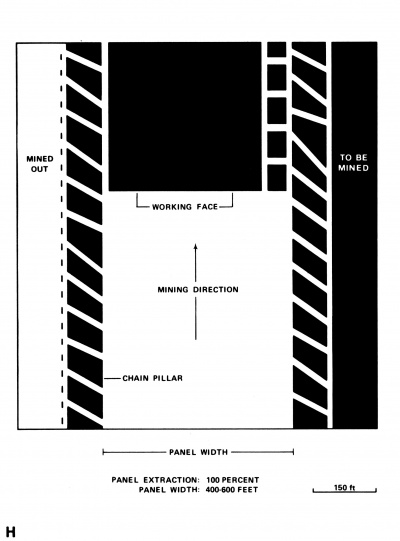
References
- ↑ ENR Document 85/01, Guither, H. D., J. K. Hines, and R. A. Bauer, 1985 The Economic Effect of Underground Mining Upon Land Used for Illinois Agriculture: Illinois Department of Energy and Natural Resources Document 85/01, 185 p.
- ↑ Bauer, R. A., B. A. Trent, and P. B. Dumontelle, 1993, Mine Subsidence in Illinois: Facts for the Homeowner Considering Insurance, Illinois State Geological Survey, Environmental Geology Note 144, 16p.

